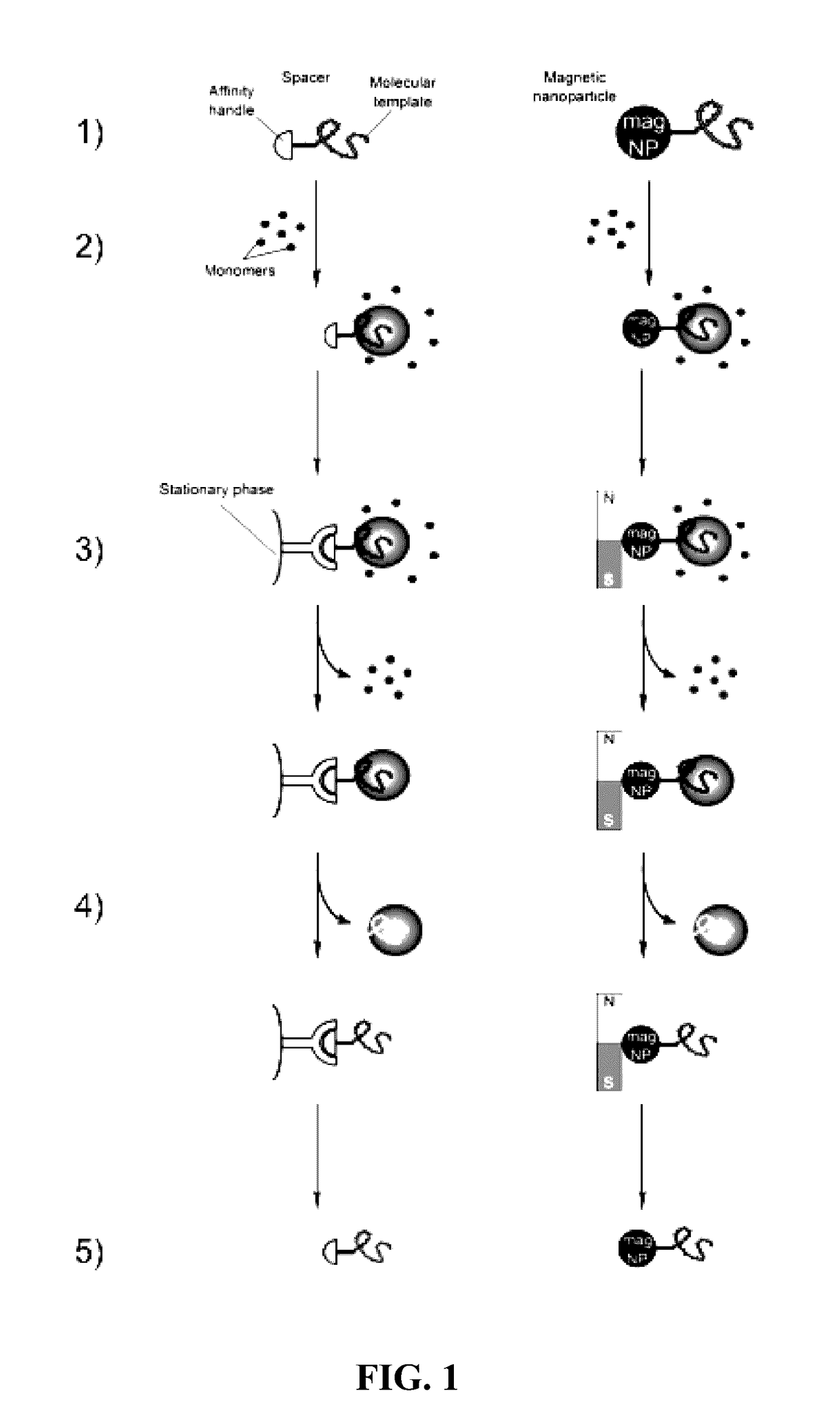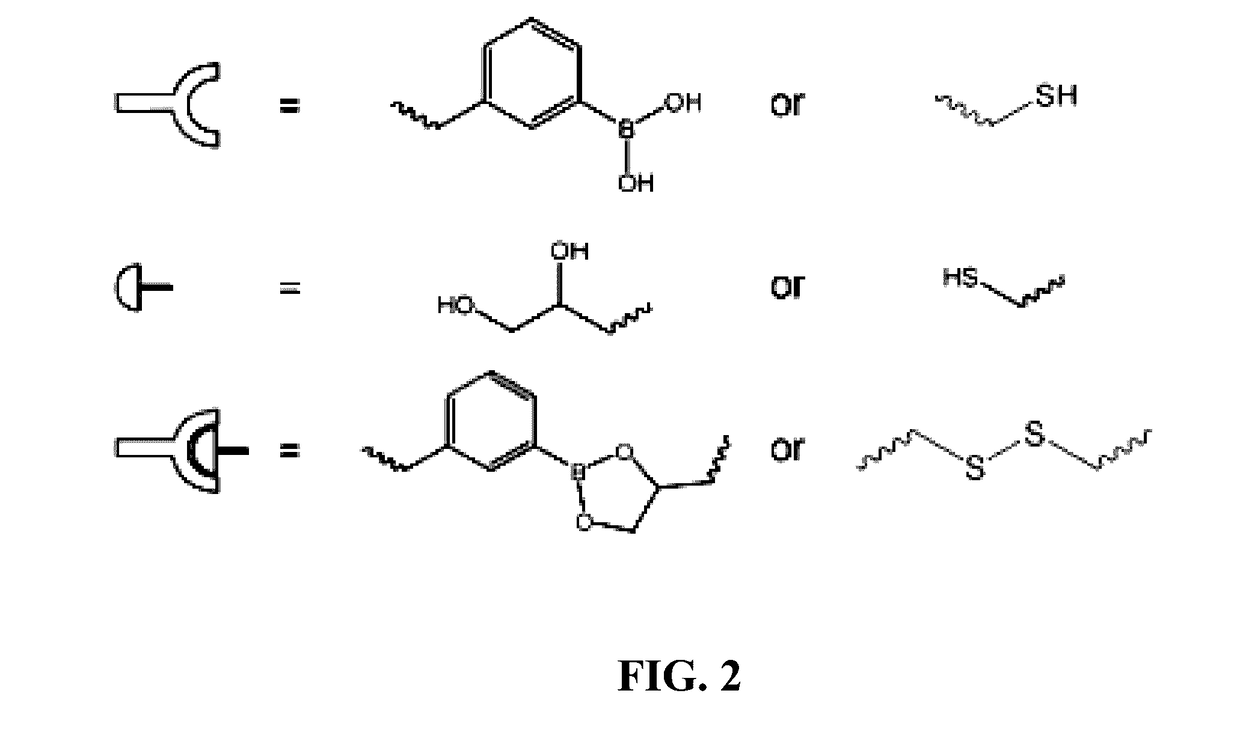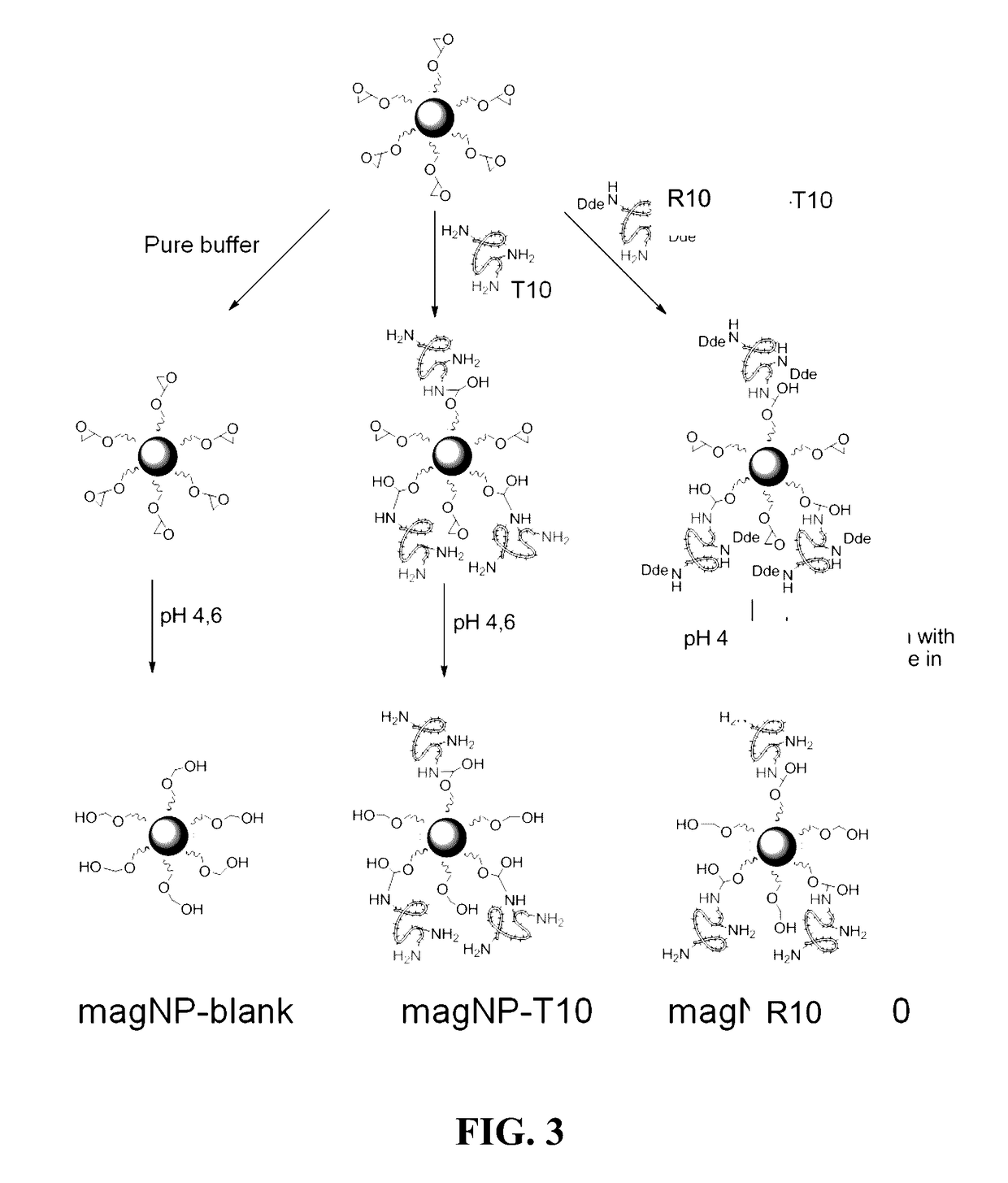Polymers prepared using smart templates
a technology of molecular imprinting and templates, applied in the field of new molecular imprinting polymers, can solve the problems of strong dependence, template occlusion is another recurring problem, and the problem of molecular imprinting polymers (mips), and achieve the effect of enhancing the effective concentration of placeholder templates and high yield
- Summary
- Abstract
- Description
- Claims
- Application Information
AI Technical Summary
Benefits of technology
Problems solved by technology
Method used
Image
Examples
example 1
[0095]Preparation of a Magnetic Core Silica Shell Nanoparticles (magNP@SiO2)
[0096]Synthesis of magnetic core particles: 6 g FeSO4.7H2O and 7 g anhydrous FeCl3. were dissolved in 200 ml millipore water under N2 with vigorous stirring at 85° C. 15 mL of 25% ammonia (aq) were added quickly into the solution. The solution turned from orange to black due to the precipitation of the magnetite nano-particles. The solution was stirred for 30 min at elevated temperature and then allowed to cool down to RT. Afterwards, the magnetic particles were collected using a magnet and washed with 3×50 mL water and finally with 50 mL 0.2M NaCl solution. The particles were dried at 80° C. under vacuum.
[0097]Synthesis of magnetic core silica shell particles (magNP@SiO2): 2 g of dry magNP were dispersed in 50 mL water by sonication. Then they were collected by a magnet and the supernatant was removed. Then, a 10% (v / v) TEOS-solution (230 mL) was added followed by 200 mL glycerol. The pH was adjusted to 4.6...
example 2
[0098]Functionalization of the Magnetic Silica Core-Shell Beads with Glycidoxypropyltrimethoxysilane (GPTMS) to Give magNPepoxy
[0099]3.25 g magNP@SiO2 were dispersed in 50 mL dry toluene under N2-atmosphere by sonication. 1 mL GPTMS was added to the solution and the mixture was heated to reflux under positive nitrogen pressure and stirred using an overhead-stirrer for 30 h. Then, the particles were collected using a magnetic separator and washed with 3 times with 50 mL toluene and 3 time with 50 mL acetone and dried under vacuum at 40° C.
example 3
[0100]Immobilization of the Decapeptides NH2-Q-K—S-L-S-L-S—P-G-K—COOH (T10) and NH2-Q-L-S—K—S—K—S—P-G-L-COOH (R10) on the Magnetic Nanoparticles to Give magNP-T10 and magNP-R10 (FIG. 3).
[0101]1 g of epoxy-functionalized magnetic particles were dispersed In buffer (phosphate buffer, pH 7.4) (5 mL) by sonication. They were separated using a magnet and the supernatant was discarded. Then, a solution of 5.3 mg T10 or R10 in 5 mL of the same buffer was added to the magnetic particles. Also a blank sample was prepared by adding 5 mL pure buffer. The three samples were incubated over night at RT on a shaker. MALDI TOF analysis of the nanoparticle samples with reference to free peptide demonstrated the successful immobilization (FIG. 4).
PUM
| Property | Measurement | Unit |
|---|---|---|
| temperature | aaaaa | aaaaa |
| particle diameter | aaaaa | aaaaa |
| pH | aaaaa | aaaaa |
Abstract
Description
Claims
Application Information
 Login to View More
Login to View More - R&D
- Intellectual Property
- Life Sciences
- Materials
- Tech Scout
- Unparalleled Data Quality
- Higher Quality Content
- 60% Fewer Hallucinations
Browse by: Latest US Patents, China's latest patents, Technical Efficacy Thesaurus, Application Domain, Technology Topic, Popular Technical Reports.
© 2025 PatSnap. All rights reserved.Legal|Privacy policy|Modern Slavery Act Transparency Statement|Sitemap|About US| Contact US: help@patsnap.com



